Crusaders Reconquista
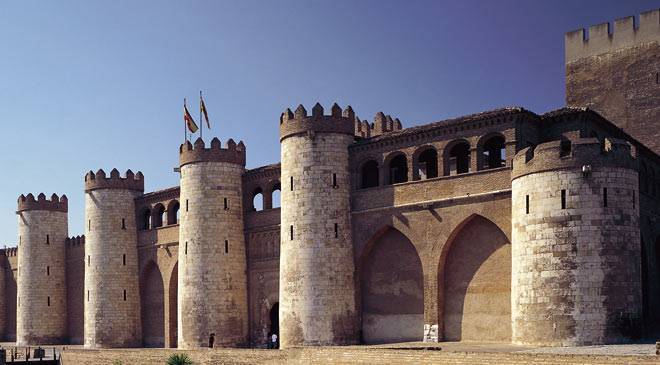
Zaragoza fortress
So the Spaniards can be said to be somewhat lucky with their history. After all, the biblical tradition of St. James says that when all the apostles parted to preach about Christ, he just went to Spain. He founded several Christian communities there and returned to Jerusalem, where in the 44 year (and according to other data, somewhere between 41 and 44) he became the first of the apostles to be executed for faith through a beheading on the orders of King Agrippa I, grandson of Herod the Great.
According to legend, after such a martyr's demise his remains were followers of St.. They put Jacob in the boat and entrusted him to the will of the waves, that is, they let him sail across the Mediterranean. And this boat miraculously sailed to Spain, where the waves threw it ashore at the mouth of the river Ulla (where they then built the city of Santiago de Compostela). In 813, the local hermit monk Pelayo, saw a guiding star, followed her and found this boat, and in her the relics of the saint remained incorruptible. After that, they were placed in a tomb and turned into an object of worship. And from that moment on, she became the cherished goal of pilgrims from all over Europe, and Saint Jacob himself, in this difficult time of Spain for the Arab conquest, was honored as the heavenly patron and protector of the country. The Spaniards venerate him today, and are very kind to this shrine, stored in Santiago de Compostela. And you should not be surprised that soon the first monastic order of St. Andrew arose on this holy foundation. Jacob of Altopachio, who became known as the Order of Tau, who is considered the oldest among all other European spiritual and knightly orders. Already in the middle of the X century in Altopachio, near the city of Luca, Augustinian monks founded a hospital designed to help pilgrims going to Rome or Santiago de Compostela. The very first mention of this hospital refers to the 952 year, and the second to the 1056. It was at this time that the Order became truly military, and its monks began to guard the pilgrims on the dangerous path between Lucca and Genoa. However, the Order retained its civilian functions. The popes supported him until 1239, when he was officially given military status.
Although the hospitals of the order were built not only in these places, but also in other regions of Europe, and even in France and England, he was never particularly popular and did not seek to move forward among others. In 1585, this order was united with the Order of St.. Stefan from Tuscany and actually ceased operations. Knights of the Order of Tau distinguished the monastic form of dark gray or even black attire with a T-shaped cross on the left of the chest. At the same time, the hood was red and decorated with a white T-shaped cross.
To guard the pilgrims going to the relics of St. Jacob in Galicia, after the Order of Tau appeared, the spiritual and knightly Order of Santiago or St. Iago was also created, the exact name of which is: "The great military order of the Sword of St. James of Compostela." It was founded around 1160 of the year, and it still exists as a civil knightly order under the auspices of the monarchs of Spain.
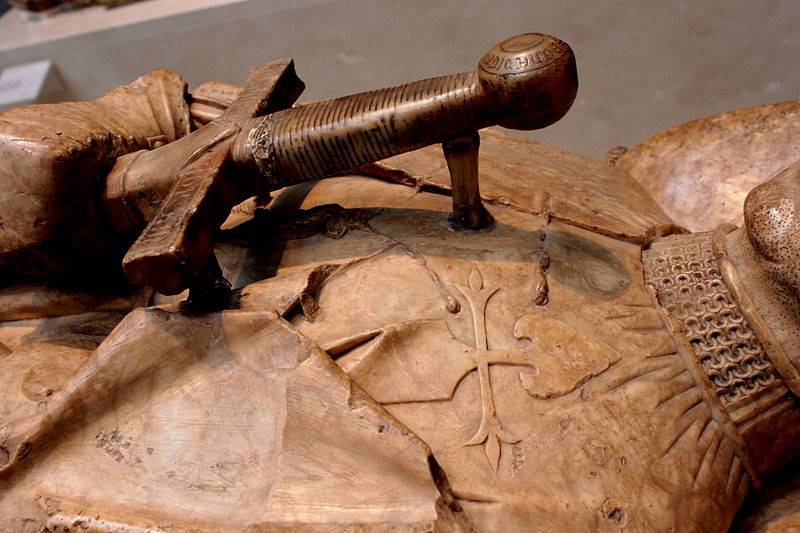
Effigia Dona Garcia de Osorio, 1499-1505 On his surko is visible the emblem of the Order of Santiago. Alabaster. Toledo, Spain.
The sign of belonging to this order at first had the appearance of a red sword, which had a cruciform handle, pointing down. Then he was replaced by an image of a red lily-like cross, the lower extremity of which had the shape of a pointed blade.
And so began the history of numerous Spanish spiritual and knightly orders, which appeared on Spanish soil one at a time, primarily because not only feudal fragmentation reigned there, but at the same time there was a war everywhere against the Moors! Well, and then it happened that in 1150, King Alfonso “The Emperor” beat off Calatrava from them and ordered the Archbishop of Toledo to rebuild the city’s main Muslim mosque into a Christian church and consecrate it. To protect the city by the decision of the king should have been the Knights Templar. But those were too few to hold him in their hands, and they in turn handed him over to the Castilian king Sancho III.
The situation was very difficult, because if Calatrava were lost, the Arab threat would have hung over Toledo and other lands of King Alfonso VII. Therefore, King Sancho decided to convene a Council of nobles, among whom were Don Raimundo, the abbot of the monastery of Santa Maria Fitero and a monk from Burgos, Diego Velasquez, a nobleman, and a participant in many campaigns of King Alfonso. The participants listened in silence to the king and only one Raimundo addressed the audience with a hot speech, arguing that the fight against infidels should be continued, after which he asked the king to entrust the defense of the city against Muslims to him. Diego Velazquez supported him, although to many it seemed insane. However, the 1 of January 1158 in the city of Almasan, King Sancho III, son of Alfonso VII, transferred both the city and the fortress of Calatrava to the Order of the Cistercians in the person of Abbot Raymundo and his other monks, in order to protect them from the enemies of the Christian faith. The gift was confirmed by the King of Navarre, as well as several counts, magnates and prelates. Later, Sancho III presented the Order of Calatrava, calling him that way, also the village of Siruhales, near Toledo, as a token of gratitude for her protection.
Don Raimundo and captain Don Diego Velasquez organized the army of the order from among the knights who went to them from all over Spain to fight the Arabs. Combining knightly fortitude with the monastic structure, they quickly forced them to consider themselves to be power.
The soul of the order for a long time was Diego Velasquez. When he died, the knights decided to choose a master of the order, which was done in 1164. And soon their order became a real military force, and its knights successfully fought in many Christian armies, not only in Spain itself, but also in other European countries. In Castile, they took part in the conquest of the city of Cuenca. In Aragon, with their active participation, the city of Alcañiz was beaten off from the Moors. It is not surprising that the order provoked such burning hatred among Muslims that a brave Arab commander Almanzor at the first opportunity gathered a strong detachment and laid siege to Calatrava. The fortress was taken, after which he interrupted all its defenders. In turn, those of the knights of the order who survived attacked the fortress of Salvatier, captured it and turned it into one of the order strongholds.
Pretty soon, the Order of Calatrava regained its strength, so much so that in 1212, he was able to participate in the battle of Las Navas de Tolosa, in which the master of the order fought against the infidels in the front ranks of the royal army and was seriously wounded in the arm. Then the knights of Calatrava fought off many cities and fortresses from the Muslims, and in the city of Salvatierra they founded a monastery called Calatrava. In 1227, they took an active part in the siege of Baesa, and in 1236 and in the capture of Cordoba.
By the 14th century, the order had such power and influence that the Spanish kings began to take him seriously and ensured that the election of the master of the order was held with their participation. By the way, it was the Order of Calatrava that the Pope handed over all the property of the Spanish Templar, which strengthened him even more.
Then on All Saints Day in 1397, Benedict XIII approved the emblem of the order. Well, in the XV century the order had already numerous vassals in all of Spain, but was not so much involved in the Reconquista as intervening in conflicts between various Christian sovereigns.
It is clear that such political activity did not suit "their Catholic Majesties" - King Ferdinand and Queen Isabella, so after the death of the next master they attached the lands of the Order to the possessions of the Spanish crown!
The Order of Alcantara had, by its predecessors, the knights of the brotherhood of San Julian de Pereiro, founded in 1156 year (or 1166 year) by the two brothers Suero and Gomez Fernandez Barrientos.
According to legend, they built a castle on the banks of the River Tahoe to protect the surrounding land from the Moors. Then the Order of St. San Julian de Pereiro was approved by Pope Alexander III in 1177, and in 1183 he was taken under the auspices of the Order of Calatrava (and the Master of the Order of Calatrava received the right to supervise him). At the same time, he received the Cistercian charter and his own "uniform" - a white robe with an embroidered red cross on it. The order consisted of both caballeros — that is, noble knights and lay clerics.
Alcantara Bridge.
This order received the name of Alcantara by the name of the city of Alcantara, located on the plain of Extremadura and on the banks of the River Tajo, in the very place where the old stone bridge was transferred (in Spanish - cantara). The city passed many times from the Moors to the Spaniards and back, until King Alfonso finally gave it to the Knights of Calatrava. However, those in the 1217 year decided that since Alcantara is too far from their possessions, it would be difficult for them to defend it. Therefore, they asked the king for permission to transfer the city to the Order of the Knights of San Julian de Pereiro, as well as all his other possessions in the kingdom of Leon. Well, this order, sometimes called the Order of Trujillo, was named the Order of Alcantara.
Getting into it was harder than becoming a knight of the Order of Santiago or Calatrava. So, the candidate should have not only two whole generations of noble ancestors, but all four families of his ancestors also had to own land estates, which had to be supported by relevant documents.
Over time, the wealth and land tenure of the order reached such proportions that the rivalry of candidates for the post of magistrate ended in an armed clash, which was a direct violation of the vow of the Order, which prohibited the uncovering of weapons against Christians. As a result, the order broke up, came to a bloody civil strife, which of course did not benefit the order. Later, the Castilian nobles themselves, and spiritual and knightly orders, spread out in two warring camps, and the knights of the Order of Alcantara fought on both sides of the conflict! In 1394, the next Master of the Order proclaimed a crusade against the Moors of Granada. However, it ended in failure. The troops of the crusading army were defeated, and Granada was only able to take in 1492 by the joint efforts of the forces of King Ferdinand and both of the orders of Calatrava and Alcantara.
At this time in the order there were 38 commanders, whose annual income was 45 thousand ducats, that is, he was very wealthy. But the value of spiritual and knightly orders in the armies of the Iberian Peninsula at that time began to decline sharply. So, for example, in 1491, out of ten thousand cavalry soldiers of the Castilian-Aragonese army, who came out against Grenada (Granada), the warriors of the Order of St. James and the Sword accounted for only nine hundred and sixty-two horsemen, the Order of Calatrava - only four hundred, and the Order of Alcantara sent only only two hundred and sixty-six knights.
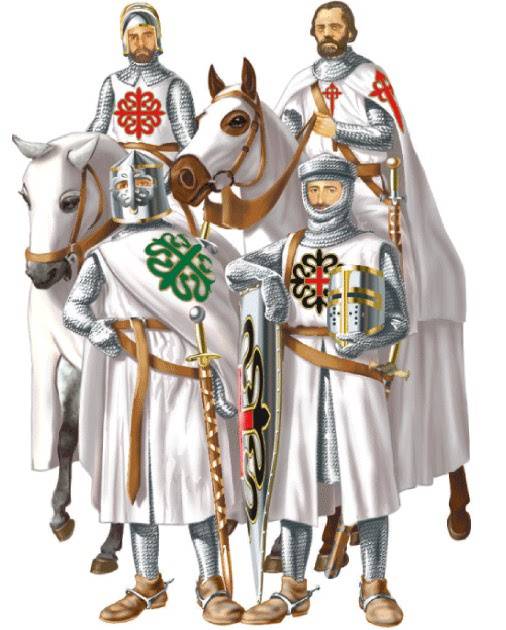
Knights of the most famous Spanish orders of knighthood.
However, all this time the divisions in the orders continued. Their commanders were elected and overthrown, but in the end it all ended with the fact that in 1496, King Ferdinand won the papal bull, which he bestowed on the master of the Order of Alcantara. Well, in 1532, the king of Spain, Charles V, all Spanish spiritual and knightly orders officially subordinated their royal authority.
True, the goal of the Catholic kings of Spain was not to liquidate these orders, but only to completely subordinate them to the Spanish crown. Especially since their military significance fell all the time. In 1625, the Order of Alcantara numbered only 127 knights. Twenty years later, his knights with knights of other orders joined the same order regiment, which was part of the Spanish army until the XX century.
There was in Spain and the spiritual-knightly Order of San Jorge (that is, St. George) de Alfama, following the statute of the Order of the Augustinians and founded in the year 1200. The headquarters of the Order was in the fortress of Alfama, hence its name. The value and possibilities of the order were small, and then in 1400, he became part of the Order of the Blessed Virgin of Montesa, which gave his knights the right to wear the red cross of the Order of Montez. The Order of St. The Virgin of Montesa was established much later than all the others and in its activities was limited to the kingdoms of Aragon and Valencia.
In the 1312 year, when the Templar order was abolished and dissolved, the kings of Aragon Jaime II and the King of Portugal convinced the pope that his possessions in Aragon and Valencia should not be transferred to the Hospitallers, especially since the process of the Templar brothers was found innocent by the Aragon brothers. The king offered to give them to the newly formed Order of the Virgin of Montesa in Valencia. Pope John XXII in 1317 blessed the new order and gave him a Benedictine charter. So the Order of Montesa became the second order after the Order of Christ in Portugal, which received the right to inherit the property of local Templar, but unlike the Portuguese Order, he was never declared the successor of the Order of Templar.
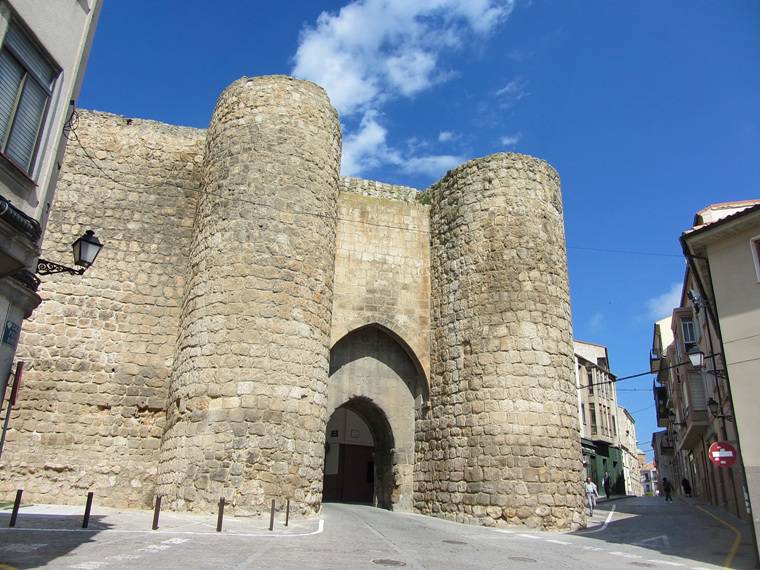
Gate to Almazan.
Knights of the new order could be Catholics of legal origin, two generations of landowner ancestors and no non-Christian ancestors. The Master of the Order of Calatrava also received the right to control his activities. At the same time, his knights retained the white color of their robes, but the red cross was replaced with black. In 1401, the military order of Monteza combined with the Order of St. Georgy Alfamsky, since their goals completely coincided. Under the authority of the crown, the order remained autonomous until 1739, when the other three orders came under the control of the royal administration.
Subsequently, the Spanish Cortes all orders of the law of 1934, were dissolved. However, the Order of Montesa was revived in 1978, although it was not included in the number of official state orders of Spain.
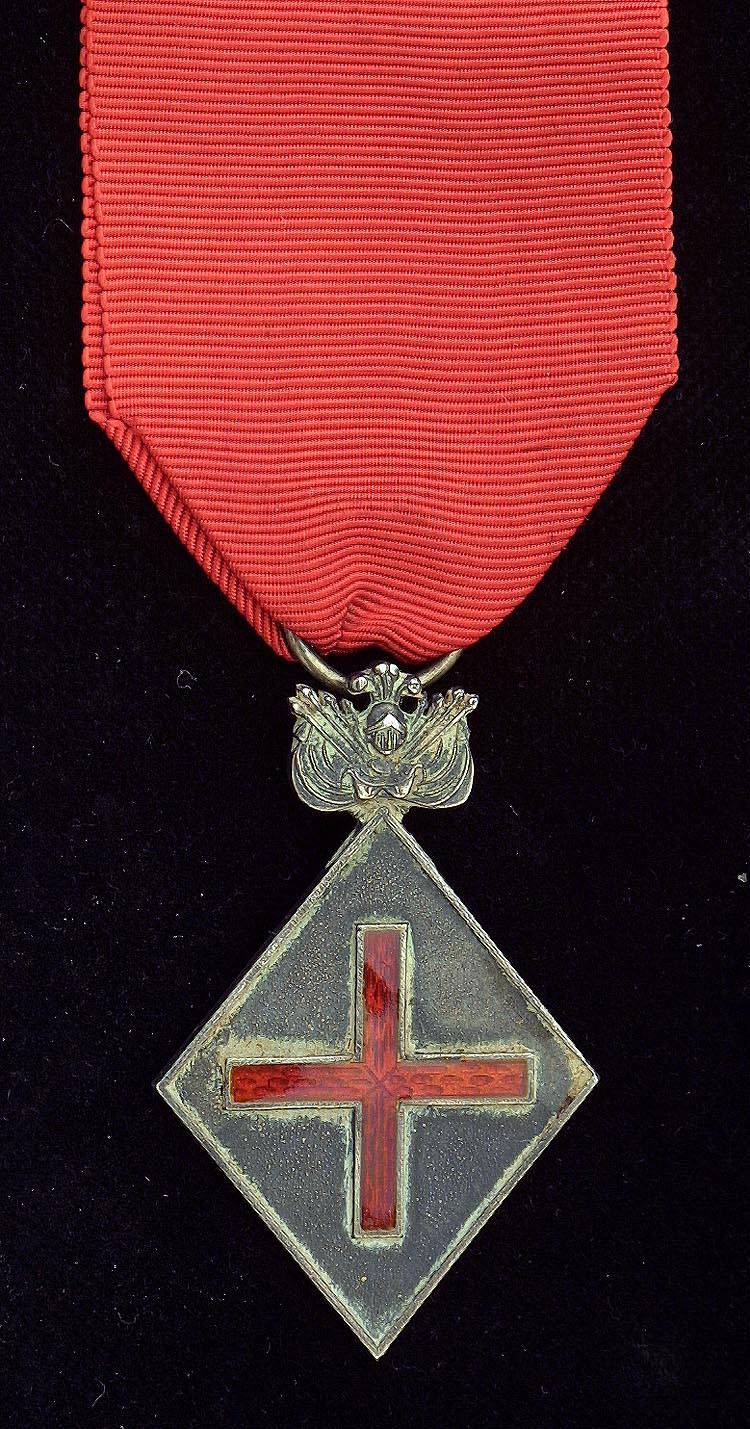
Cross Montesa.
The badge of the order was an equilateral Greek cross of a simple red enamel on a white rhombus, and then became similar to the sign of the Order of Calatrava, but only in black with a red cross enamelled on it. The mark is worn on the neck ribbon or sewn onto the left side of the chest.
In the Kingdom of Aragon in 1233, the Order of Mercy was founded by the Provencal nobleman Per Nolasco. His goal was to ransom Christians who fell into slavery to Muslims. Of course, he also defended the pilgrims by force of arms, so he soon became a military order. However, he never differed in multiplicity and had only a small detachment of knights. The brothers of the order wore white clothes and the small coat of arms of Aragon on the neck chain.
Modern defenders Tortosa.
The Spaniards were also lucky because the first women's knightly Order of the Ax or Sekira was founded in this country, and it happened a long time ago. And it was like this that in 1148, the combined forces of the participants of the second crusade beat the fortress of Tortosa from the Muslims, however, the Saracens decided to retake the city the following year, and this attack had to be reflected by women, as their men time were occupied by the siege of Lerida. And they were able to fight off not from some small detachment there, and by no means throwing stones from the wall, but by fighting, dressed in men's armor with swords and axes in their hands. When the troops of Count Raimund approached the city, he needed only to thank the women of Tortosa for their courage, which he certainly did. However, it seemed to him simple gratitude was not enough, and he in honor of their merits founded a knightly order, which he called the Women Knights of the Order of the Ax. Married women in it were granted the same knightly rights with their husbands, and unmarried rights with their fathers and brothers. And it was a real military knightly order, the emblem of which was the image of a red ax on a tunic.
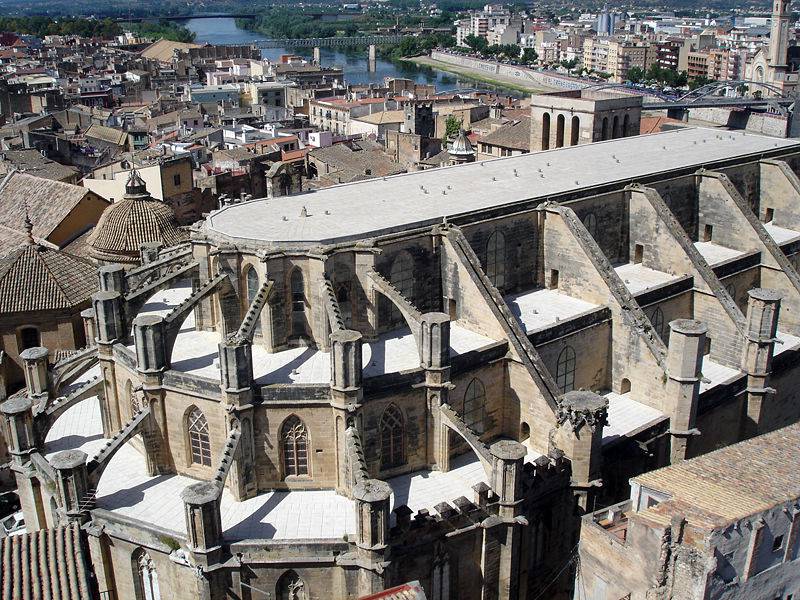
Cathedral of sv. Mary in Tortosa is unique in that it has a three-tier nave and a flat roof!
A special feature of Spain was the formation there of a large number of orders of knighthood, which had, so to speak, local significance. For example, in Aragon, such orders as Monjua and Monfragüe were created, but there was a real medieval “nationalism” that was understood then: you have your own order there, in Castile, and we have our own in León!
In this regard, the history of the Order of Montjuis (Montegaudio in Spanish) or the Order of the Holy Virgin Mary (The Most Holy Theotokos) Mongua (“The Hill of Joy”), which was founded in the Holy Land by the Spanish Count Rodrigo, a former knight of the Order of Santiago, is very interesting. In 1176, he transferred the landownership in Castile and Aragon to the Order established by him, and the King of Jerusalem provided the "Knights of Mongeis" as a cloister with several towers in the Palestinian city of Ascalone along with the duty to defend it.
The headquarters of the Master of the Order was located in the castle of Montjuis on the mountain of the same name near Jerusalem, and this mountain got its name during the first crusade when the crusaders approaching the city saw the image of the Blessed Virgin Mary on it, which instilled in them joy and confidence in victory over the unfaithful .
The Order of the Most Holy Theotokos Monjuis, whose members, like the Knights Templar, had a statute of Cistercians and wore the same white order decorations, was recognized by the Pope in 1180 year. Initially, it was conceived as an international spiritual knighthood fraternity (similar to orders of Johannites, Templar and Lazarites), but it turned out that over time it turned into a national Spanish order, just as the Order of Maria Teutonic became an order of German knights. Their emblem was a red and white eight-pointed cross. Some knights of this order participated in the Battle of Hattin, and all died there, and the survivors left for Spain.
There was such an amazing Order of la Banda or Belt in Spain, established in 1332 by the king of Castile and Leon Alphonse XI, either in Burgos or in the city of Victoria, and it was also one of the typically Spanish "small-town" orders created by the Spanish kings to protect those or other cities and quickly disappeared when the military threat to such cities disappeared.
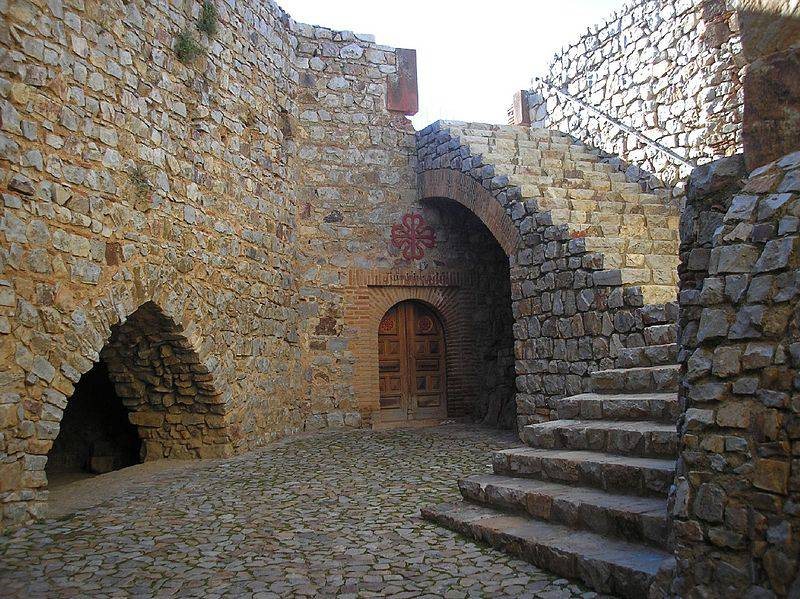
The ruins of the castle of Calatrava la Vieja.
In medieval Portugal, too, a spiritual knightly order was created, called the Order of Avis. There is no exact information about the date of its foundation, but information about it is very scarce and very contradictory. According to some sources, it was founded in 1147 and received the name of the Order of the New Knights; according to others, the members of the second crusade founded it in 1148.
In which all sources are one, it is in the statement that the order was created to protect the city of Évora, which had just been beaten off from the Moors. At first he also had a charter of sv. Benedict was also called the Order of St. Benedict of Avisi, but then in 1187, he was subordinated to the Spanish Order of Calatrava and the old charter was replaced by the charter of the Cistercian monks. From this time on, he became known as the Order of the Knights of the Order of Calatrava. At the same time, the masters of the order were still asserted by the master of the order of Calatrava.
The knights of the ворvor gave vows of poverty, chastity and obedience, and pledged themselves to fight against the Moors. But the name - the Order of Avis, was due to the fact that he was transferred to the city of Avis in the province of Alentejo. According to some reports, this happened in 1166 year, according to others - only in 1211 by the decision of King Alfonso II. In 1223 - 1224 The brothers from Évore made this city their residence, after which the Order became known as the Order of Avis. Green anchor cross as an emblem at the request of King Alfonso IV he was granted by Pope. Moreover, according to some sources, this happened in 1192 year, and the pope at that time was Celestine III, and according to others - in 1204 under Pope Innocent III, who gave him privileges, freedoms and immunity similar to those of the Order of Calatrava . It is also known that the knights of the Order of Avis showed miracles of courage during the siege of the city of Seville in 1248.
Although the Order formally subordinated to the Grand Master of the Order of Calatrava, however, it gradually acquired an autonomous character, and became increasingly politically dependent on the kings of Portugal, who bestowed on the Order extensive lands recaptured from the Moors. The end of the Reconquista in Portugal (c. 1249) and the sluggish war with Castile made the formal dependence of the Order of Avis on Castile dangerous for Portugal. Attempts to solve the question of who, to whom and in what form should obey and whether to obey at all, gave rise to long trials, which stopped only after the independence of the Portuguese orders was confirmed by Pope Eugene IV in 1440.
In the 15th century, the Order of Avis, along with the Order of Christ, played a very important role in securing Portugal in Africa. Then the first conquests on the African continent began with the capture of Ceuta by King João I and the later siege of Tangier in 1437. Over time, the “secularism” of the Order of Avis reached the point that in 1496 and 1505. his knights were freed, respectively, from the vows of poverty and chastity! In 1894, the order became known as the Royal Military Order of St. Benedict of Avisi. The master of the order became the Great Commander, and he became the Crown Prince of Portugal. The award Order of St. Benedict of Avisi received three classes: the Grand Cross, the grand officer and the knight. In 1910, the Republic abolished the Order, but after 1 World War I, the Military Order of Avis was again revived as an award for military merit in 1918, and the President of the Republic received the right to award them.
Royal Order of St. Wings of St. Michael was a secular knightly order, which was founded by the first king of Portugal, Don Alfonso Enrique, on 1171 or, according to other historians, in 1147, after 8 in May 1147, he knocked out the Moors from Santarem. A group of knights from the Kingdom of Leon participated in this battle, especially those who honored St. Michael and called the "Military wing (Ala) of the Order of Santiago" (hence the cross of St. James in the badge of the Order, which was superimposed image of the red wing). The spiritual life of the Knights of the Order was led by the Cistercian priests. There are still both Portuguese and Spanish branches of this order, membership in which is considered very honorable and is given to both gentlemen and ladies.
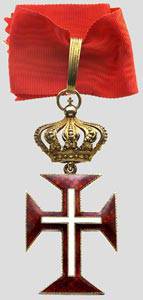
Cross of the Order of Christ.
The Order of Christ became the successor order of the Templars in Portugal. It was founded in 1318 by King Dinysh the Generous to fight the Moors. Pope John XXII transferred all the possessions of the Portuguese Templar to the Order of Christ, including Tomar Castle, which in 1347 became the residence of his great master. Hence, another name for this order - Tomarsky.
By the way, the Templars settled on the lands of Portugal back in the 1160 year, when they built their impregnable castle Tomar there, which thirty years later withstood a lengthy siege of the Moors from Yacoub al-Mansur. The Portuguese monarchy hoped for the help of the Templars in the Reconquista, so already in 1318, King Dinis invited them to organize themselves into the “Militia of Christ”, and a year later this militia turned into a new order.
Fortress of São Jorge.
The headquarters of the order was Castro Marim Castle in the southern part of the kingdom. Knights took vows of poverty, celibacy and ... obedience to the Portuguese monarch. In the 1321 year, it included 69 knights, nine priests, and six sergeants, that is, the crowd did not differ among other orders. After the end of the reconquest, even he remained without work and threatened to become a burden for the state. Therefore, Prince Henry the Navigator, being the master of the order, turned him against Muslim Morocco, and in order for the order to have money, he obliged merchants from all African goods to pay tax in his favor, and it was with these funds that the Tomar castle monastery was rebuilt.
The Tomaran knights, like their Avis brothers, actively participated in the overseas expeditions of the Portuguese navigators. So, Vasco da Gama sailed with the emblem of their order cross.
King Manuel, seeing royal power in Tomarians, secularized the order as grand master, and his successor, King Juan III, turned the post of grand master into hereditary, owned by the kings of Portugal. The departure from the religious beginnings caused concern to the Vatican. However, some of the popes, referring to the role of the papacy in the establishment of this order, began to present their own order of Christ, which the Portuguese monarchy initially opposed; There were known cases of the placement of gentlemen of the papal order in Portugal in custody.
Then, during the years of the Spanish-Portuguese Union, another reform of the order was carried out. Now any nobleman who served two years in Africa or three in Portuguese had the right to join it. navy. In 1789 he was subjected to final secularization, and in 1834 all his property was nationalized. After the collapse of the Portuguese monarchy (1910), all ancient orders in the country were liquidated, but in 1917, the Order of Christ by the President of Portugal was restored as a civilian award.
Very ancient, though not directly related to Reconquista, was the Order of St. Lazarus, which was both a religious and a knightly order, and was founded in the Kingdom of Jerusalem by Gerard de Mortig around 1098 of the year on the basis of a hospital for lepers. It was usually entered by knights, patients with leprosy, a disease widespread in the Middle Ages. The emblem of the order was an eight-pointed cross in green. The knights of the order used to fight without helmets and only with their appearance drove the enemy into horror, besides, they did not feel pain and fought, despite the wounds. After the fall of Acre in 1291, the knights of St. Lazarus left the Holy Land and Egypt and moved first to France, and then, in 1311, to Naples. In 1517, part of the order merged with the Order of St.. Mauritius in one order of St. Mauritius and Lazarus.
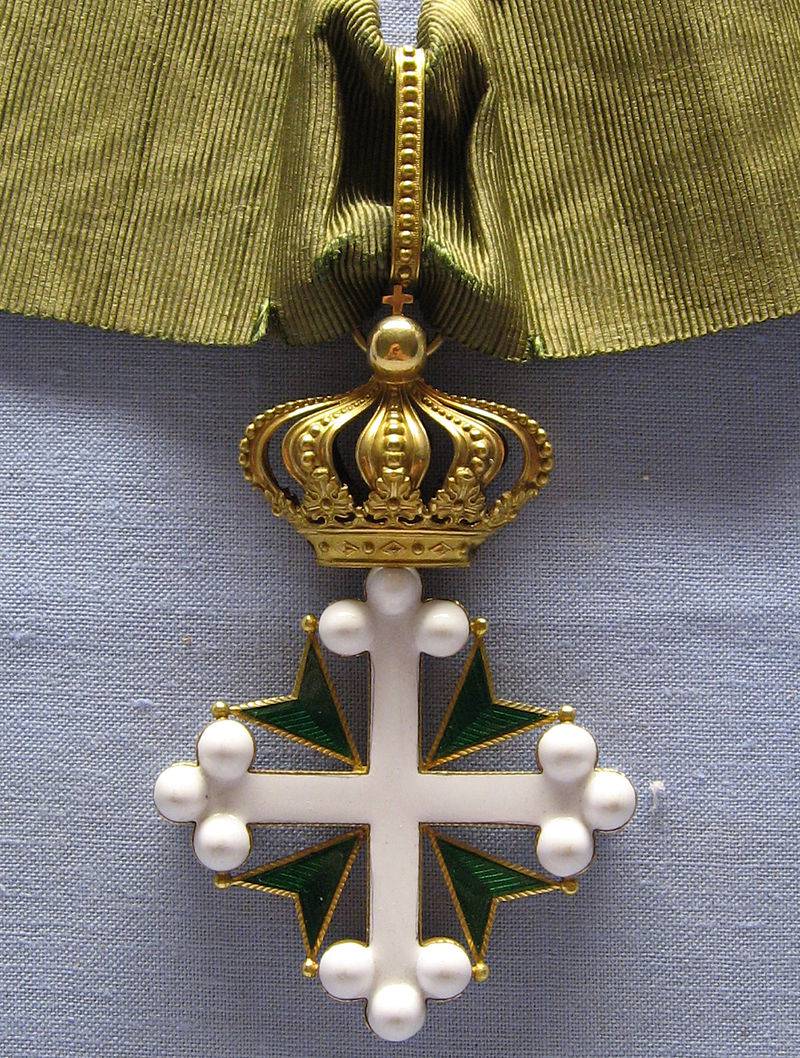
Order of sv. Mauritius and Lazarus.
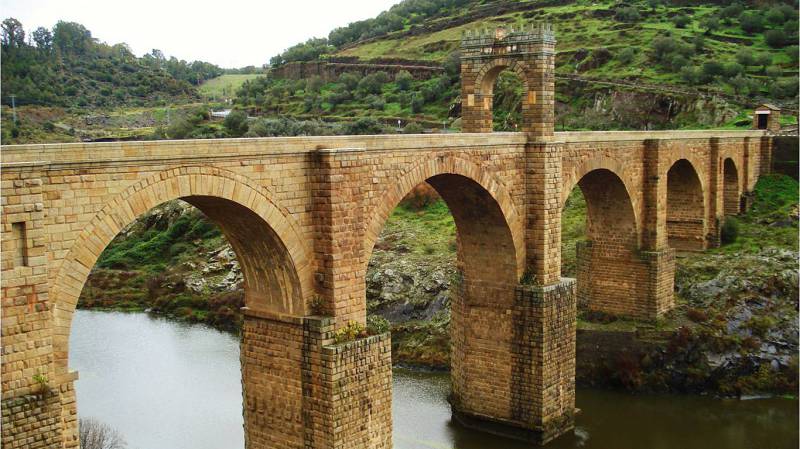
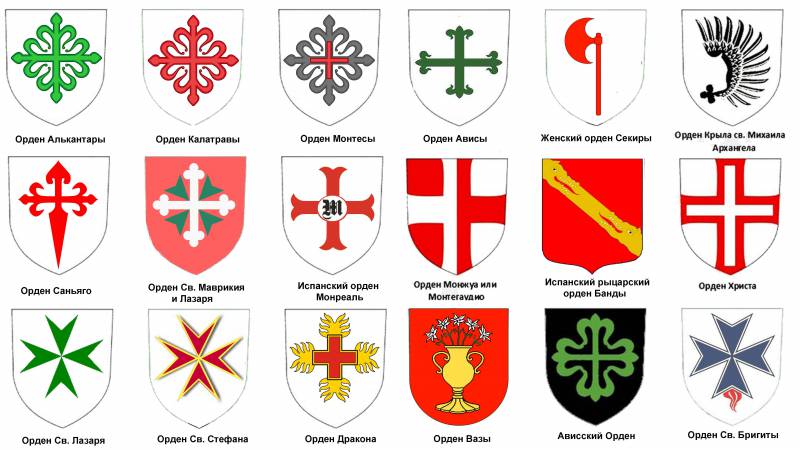
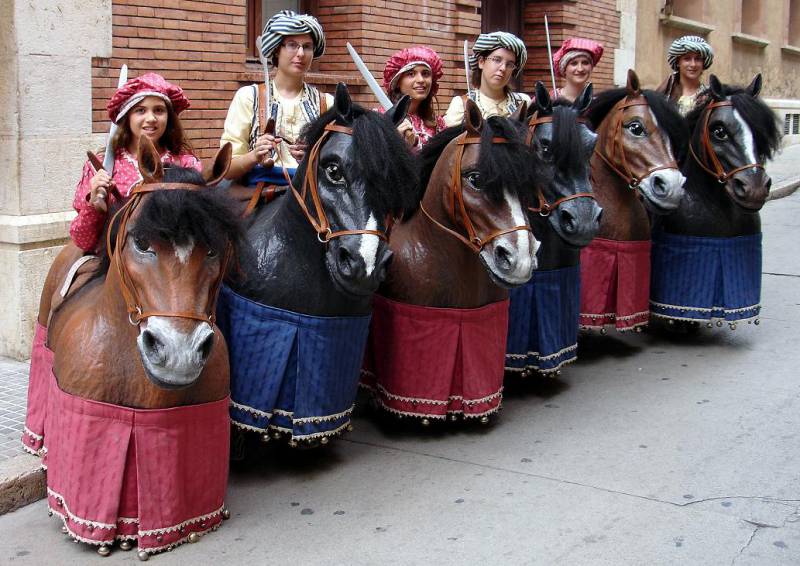
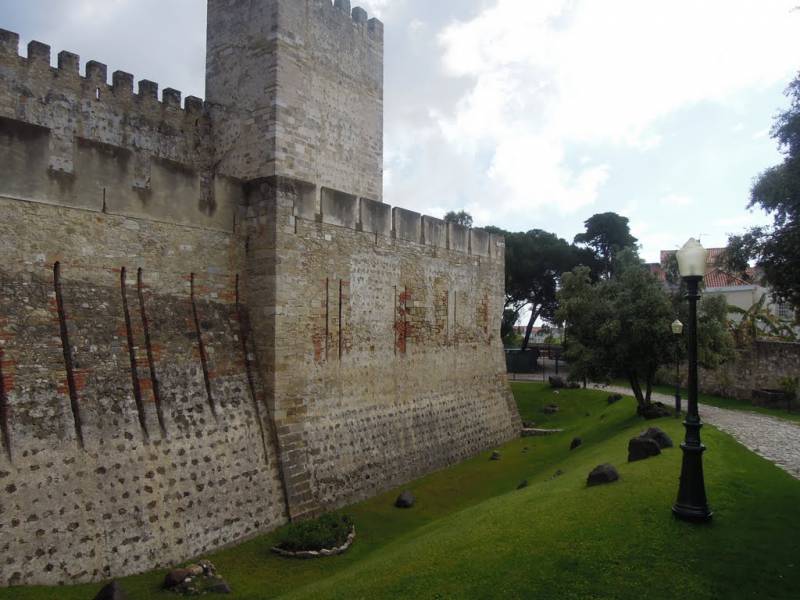
Information